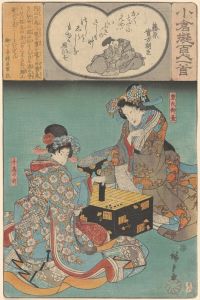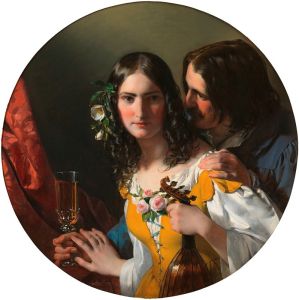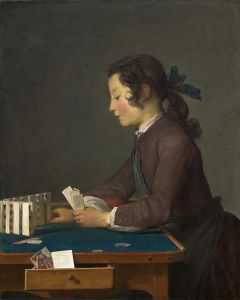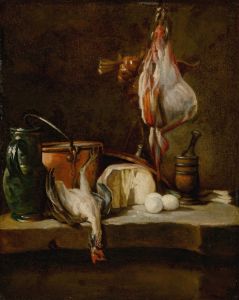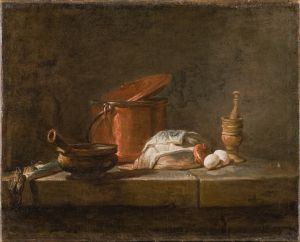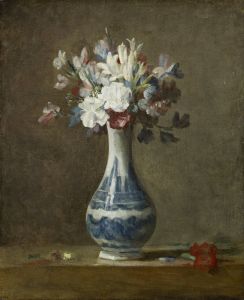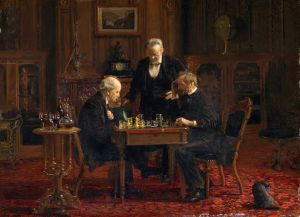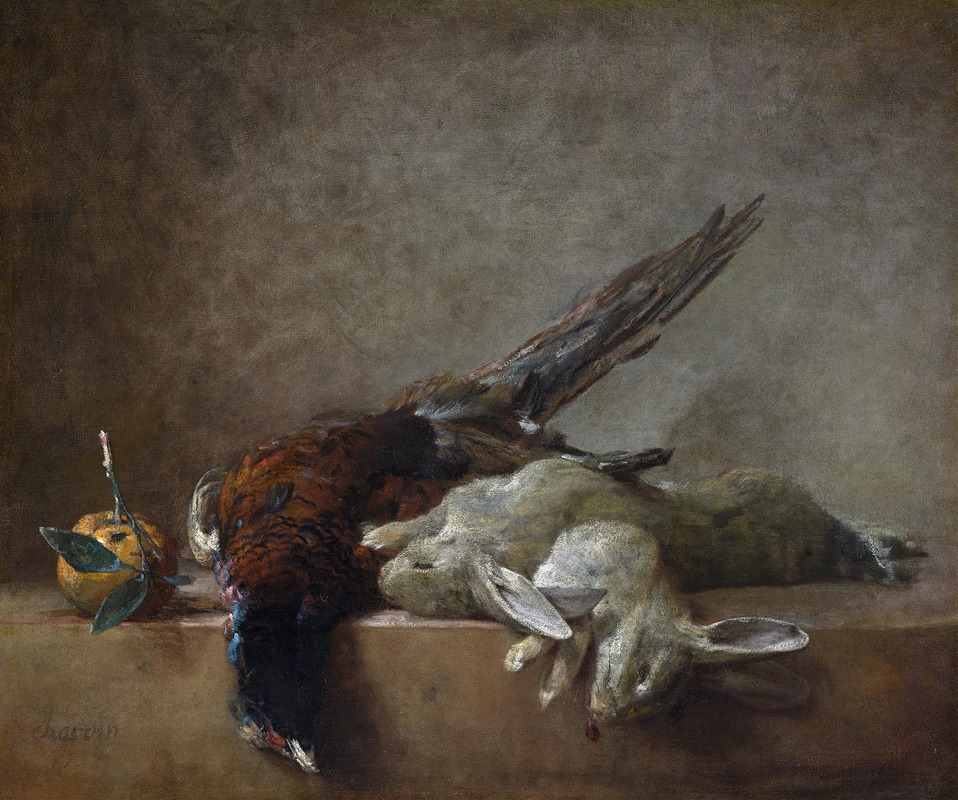
Still Life with Game
A hand-painted replica of Jean Siméon Chardin’s masterpiece Still Life with Game, meticulously crafted by professional artists to capture the true essence of the original. Each piece is created with museum-quality canvas and rare mineral pigments, carefully painted by experienced artists with delicate brushstrokes and rich, layered colors to perfectly recreate the texture of the original artwork. Unlike machine-printed reproductions, this hand-painted version brings the painting to life, infused with the artist’s emotions and skill in every stroke. Whether for personal collection or home decoration, it instantly elevates the artistic atmosphere of any space.
Jean Siméon Chardin, a prominent 18th-century French painter, is celebrated for his exquisite still life paintings and genre scenes. One of his notable works is "Still Life with Game," which exemplifies his mastery in depicting everyday objects with a sense of realism and tranquility. Chardin's ability to elevate the mundane to the realm of fine art is evident in this painting, where he captures the textures and subtle interplay of light and shadow with remarkable skill.
"Still Life with Game" is a testament to Chardin's meticulous attention to detail and his profound understanding of composition. The painting typically features a variety of game, such as birds or rabbits, arranged on a table or surface. Chardin's choice of subject matter reflects the 18th-century French interest in hunting and the bounty of nature, which were common themes in art during this period. The depiction of game in still life paintings often symbolized abundance and the pleasures of the hunt, resonating with the tastes and interests of Chardin's contemporaries.
Chardin's technique in "Still Life with Game" is characterized by his use of a muted color palette and soft, diffused lighting, which imbues the scene with a serene and contemplative atmosphere. His brushwork is both precise and subtle, allowing him to render the textures of fur and feathers with lifelike accuracy. This attention to detail not only showcases Chardin's technical prowess but also invites viewers to appreciate the beauty in ordinary objects.
Unlike many of his contemporaries who favored grand historical or mythological themes, Chardin focused on the simplicity and quiet dignity of everyday life. His still life paintings, including "Still Life with Game," are devoid of overt symbolism or moralizing messages, instead offering a direct and unembellished view of the world. This approach aligns with the Enlightenment ideals of the time, which emphasized observation and the appreciation of nature.
Chardin's work was highly regarded during his lifetime, earning him membership in the prestigious Académie Royale de Peinture et de Sculpture in 1728. His still life paintings, including "Still Life with Game," were praised for their honesty and clarity, qualities that set them apart from the more ornate and dramatic works of his peers. Chardin's influence extended beyond his own era, impacting future generations of artists who admired his ability to capture the essence of his subjects with simplicity and grace.
Today, "Still Life with Game" is appreciated not only for its technical excellence but also for its contribution to the still life genre. Chardin's work continues to be studied and admired for its ability to convey the beauty and significance of everyday objects, reminding viewers of the artistry inherent in the world around them. His paintings are housed in major museums and collections worldwide, where they continue to inspire and captivate audiences with their timeless appeal.





